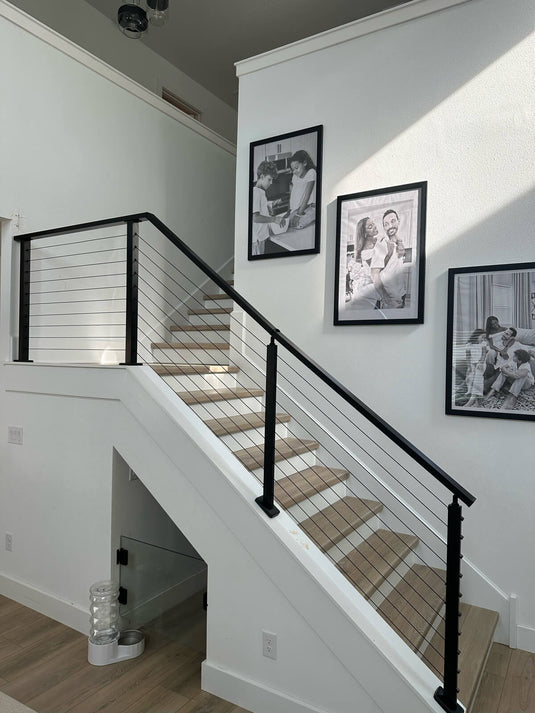TABLE OF CONTENTS
Cable Railing Cost Comparison in 2025
Because of their elegant form and durability, which appeal to both builders and homeowners, cable railing systems are growing popular in contemporary construction. Knowing the expenses of these systems will help us to make wise selections that strike a compromise between aesthetic appeal and financial constraints as we go forward in 2025. This article investigates the elements affecting cable railing prices, including materials and installation techniques, thereby offering a complete guide to enable you to negotiate this increasing trend and keep your projects on target financially.

What Are the Different Types of Cable Railings?
Choosing the right cable railing involves understanding the variety of materials and styles available, each offering unique benefits.
Materials Used in Cable Railings
Stainless Steel: Known for its durability and resistance to corrosion, stainless steel offers a sleek, modern look. Although it may be more expensive initially, its longevity can make it cost-effective in the long run.

Aluminum: Lightweight and naturally resistant to rust, aluminum is ideal for areas with harsh environmental conditions and tends to be more affordable than stainless steel.

Wood: Provides a warm, traditional aesthetic with various finishes available for customization. However, it requires regular maintenance to prevent weather damage.

Styles of Cable Railings
● Horizontal Cables: Perfect for modern homes, they offer unobstructed views and are easier to install.
● Vertical Cables: Provide a classic look and additional safety for families with young children or pets, preventing climbing.
What Key Factors Affect Cable Railing Costs in 2025?
Understanding the various factors that affect cable railing costs can help you make informed decisions that balance budget, aesthetics, and functionality.
Material Costs
| Cable railing cost by material | Average cost per linear foot installed |
| Stainless steel systems | $150 – $285 |
| Aluminum systems | $150 – $240 |
| Wood post systems | $75 – $95 |
Get free estimates for your project now
Cost Breakdown by Material
Project budgeting in 2025 still heavily relies on cable railing materials' pricing. With pricing ranging from $150 to $285 per linear foot, stainless steel is still the preferred option because of its strength and low maintenance needs. In settings requiring endurance and a contemporary look, especially in places subjected to extreme weather conditions where durability is critical, this significant upfront expenditure may be justified.
Priced between $150 and $240 per linear foot, aluminum is a middle-ground choice. Its lower weight and corrosion resistance appeal, which qualifies for both inside and outside uses without compromising design freedom. For many home projects, aluminum's low cost relative to stainless steel appeals.
Priced between $75 and $95 per linear foot, wooden cable railings provide a less costly starting point. To keep their look and structural integrity, nevertheless, they need constant maintenance, including frequent staining and sealing. While wood has a traditional look, when determining the overall cost of ownership, you should consider these care requirements.
Regional Price Variations
Because of different labor costs and material accessibility, geographic location greatly affects the total cost of cable railings. Prices usually run higher in metropolitan areas because of the greater cost of living and growing demand for skilled labor. For example, driven by metropolitan salary norms and competitive market circumstances, professional installation services could cost 10% to 20% more than in rural settings.
On the other hand, reduced labor expenses in rural areas might help a project's total cost to be lowered. These places could, however, have trouble finding materials. Should local vendors be restricted, project planners might have to pay more for shipping and logistics, particularly for specialized materials like stainless steel, which would further stretch the final budget.
Installation Costs

The way the installation is done determines the whole cost. If you have the required knowledge, DIY installation may be rather affordable as it mostly requires material expenses. Professional installation, depending on project complexity and location, costs an extra $30 to $50 an hour, however. Professional installation guarantees respect to safety standards and a premium finish, even if initial expenses are more.
Maintenance and Longevity
Both cost and longevity are impacted by long-term maintenance. With only periodic cleaning, stainless steel needs little maintenance and has a lifetime of more than 25 years. With regular maintenance to maintain its beauty, aluminum lasts 15 to 20 years. Usually spanning 10 to 15 years, depending on climatic conditions, wood needs consistent sealing or staining to affect both its cost and lifetime.
What Are Some Budget-Friendly Options and Tips for Cable Railings?
Those on a limited budget who want cable railings installed might find many strategies to combine cost with quality. As a great choice, offered between $40 and $70 per linear foot, aluminum offers competitively priced durability and corrosion resistance. Although pressure-treated wood will seem more rustic, it provides cost savings, but regular maintenance is required.
Doing do-it-yourself installations can help one significantly save costs. By incorporating pre-measured, pre-fitted components, buying a good-quality do-it-yourself kit simplifies the assembly process. Among other basic tools, be sure you have a level, drill, and cable cutters; utilize online instructions or tutorials for more guidance. By means of deliberate material choice and hands-on installation, homeowners may create exquisite, reasonably priced solutions enhancing the visual appeal of their property.
Conclusion
Material decisions, including stainless steel, aluminum, wood, and regional labor variances, will define cable railing pricing in 2025. Choosing reasonably priced materials and do-it-yourself installation will help you keep quality while reducing costs. Examining both long-term and upfront expenses is crucial as durable materials save money via less maintenance. Accepting sustainable solutions and technology developments improves functionality and fits with environmentally friendly principles, thereby guaranteeing educated selections that balance durability, cost, and appearance.




